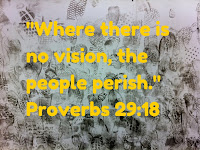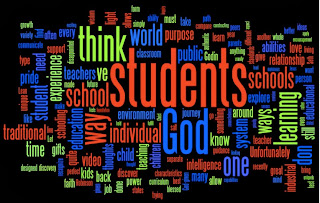Based on his
Tedtalk, Andrew Solomon said “the opposite of depression is not happiness, but vitality, and it was vitality that seemed to seep away from me in that moment.” Solomon also points out that depression is the world’s leading disability.
These points caused me to consider two main things:
1. To what degree can our schooling environment and experience impact a person’s mental/social/emotional state? Is it a positive or negative influence?
2. How is vitality defined? Can we create learning environments that boost this characteristic?
While my medical knowledge only goes as far as WebMD, I can tell by the statistics that we do not have depression figured out. So I think it’s fair to discuss and even speculate how school, just one facet of a child’s life, is influencing the well being of these children at their fragile age. Oh, by the way, I’m talking about “well being” beyond simply academics. School has become so much about scores and academic growth that arguably the most important component is being left outside the walls of these supposed “learning communities”.
John Dewey, known for his educational reforming mind, wrote that education is the fundamental method of social progress and reform. How disappointed would he be to know that the public school system has become so hungry for a higher numerical mark that strategies today could be described as a divide and conquer tactic to increase each individual score. While this may work for what is being measured, all of the isolation and testing is harmful to everything that isn’t being measured. Since we’re really only measuring one thing these days, that’s suggesting a lot of harm!
I guess what I need to know is, what does vitality look like? I can surely describe what it doesn’t look like: worksheets, rote memorization, rows of desks, silence, “don’t forget this is for a grade”, and the list goes on.
Vitality however carries a culture of complexity. Each child is considered valuable to the social, emotional, mental, and yes even academic progress of every member of the community. Students are intrinsically motivated because their time is spent on authentic projects that relate to their current life and the world around them. The relational interactions are supportive, encouraging and even fun because we need each other to become better. Development and growth are found here due to productive collaborations and luminous reflections. Each contributes to and benefits from the community. I must infer that vitality aligns with a healthy and safe culture as well. This prepares kids with tools for living their lives today, which naturally will provide skills for the future.
In contrast, the creative George Lucas noticed, “Traditional education can be extremely isolating…many schools operate as if they were separate from their communities.”

Lastly, I have a hard time thinking of vitality without encountering the concept of purpose. Rick Warren, in
The Purpose-Driven Life writes, “Without a clear purpose…you will tend to make choices based on circumstances, pressures, and your mood at that moment. People who don’t know their purpose try to do too much – and that causes stress, fatigue, and conflict.”
It’s alarming how perfectly Warren has described today’s mainstream education.
We can probably apply this depression-vitality spectrum to many facets of our lives.
Let’s increase our vitality by making genuine connections for an appropriate purpose! I would also include the Author of Life as an essential for consistent vitality.
Joy in the journey.
 consumer must be resourceful, committed and informed. I would say the same attributes are important when consuming an education. What do you value as an educational consumer? I’m concerned that our children are becoming obese on a hunger for extrinsic motivators, chasing a number, and competition.
consumer must be resourceful, committed and informed. I would say the same attributes are important when consuming an education. What do you value as an educational consumer? I’m concerned that our children are becoming obese on a hunger for extrinsic motivators, chasing a number, and competition.










